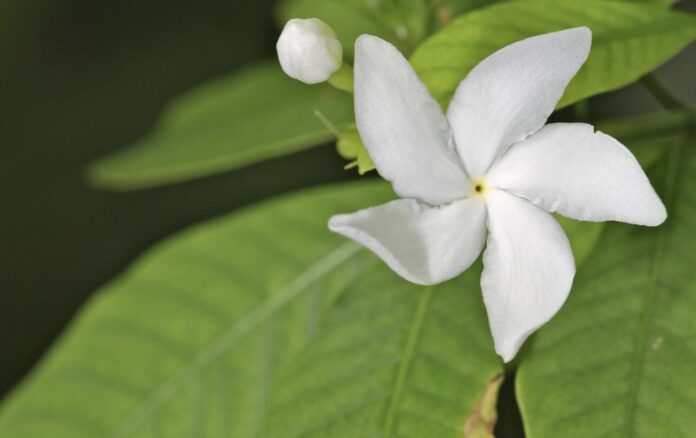Sananga is a traditional eye medicine used by indigenous tribes in the Amazon basin. It is made from the roots and stems of the Tabernaemontana undulata/sananho shrub, a plant native to the region. This traditional remedy is known for its potent effects on both physical and spiritual well-being.
The white flowers of the ‘Sananga’ plant
1. The Origin and Preparation of Sananga
Sananga’s origins can be traced back to the tribes of the Amazon, particularly those in Brazil and Peru. These tribes have been using Sananga for centuries, primarily for eye health, but it also has uses beyond treating the eyes, such as for skin conditions. The preparation involves meticulous collection and processing of the plant material. This material is mixed with water and squeezed to extract the active compounds from the plant, resulting in what we know as Sananga.
Fresh shavings taken from the ‘Sananga’ plant are ready to be mixed with water.
2. Physical Effects and Uses
Sananga is primarily recognized for its eye-healing properties. Tribal communities often use it to enhance their vision, especially before engaging in hunting activities. After applying Sananga, individuals typically report a sensation of freshness and clarity in their eyes, along with improvements in detail and color perception. Additionally, there is a reported feeling of increased connection with one’s intuition, which is particularly beneficial for tribal hunters in tracking their prey.
Apart from its visual benefits, Sananga is also believed to possess detoxifying qualities. It is thought to assist in cleansing the body of toxins and may play a role in supporting the treatment of addiction and chronic pain. However, these uses are based on traditional beliefs and practices, and should not be considered as medically verified treatments.
3. Spiritual and Emotional Healing

In the realm of spiritual healing, Sananga is revered for its ability to open the inner vision, or the “third eye,” enhancing spiritual insight and emotional healing. Practitioners often use it to gain deeper spiritual insights, cleanse the aura, or as a part of other shamanic practices. It is believed to align and balance one’s energy fields, promoting a sense of inner peace and grounding.
4. The Experience of Sananga Administration
The administration of Sananga can be an intense experience. The initial sensation is often described as a strong burning or stinging in the eyes, which can last for several minutes. This discomfort is considered a part of the healing process, symbolizing the release of physical and spiritual toxins. Users often report a heightened sense of awareness and clarity following the application.
5. Potential Risks and Considerations
While Sananga is revered for its healing properties, it’s important to approach its use with caution. The intense sensation it produces is not suitable for everyone, and there could be potential risks, especially for those with certain eye conditions or sensitivities. Consulting with a healthcare professional before use is advisable, especially for those unfamiliar with traditional Amazonian medicine practices.
6. Integration in Modern Healing Practices

In recent years, Sananga has gained attention in the realm of alternative medicine outside of the Amazon. Holistic health practitioners and those interested in shamanic traditions are exploring its use. However, it’s important to approach Sananga with respect for its cultural origins and in a manner that is ethically and sustainably sourced.
Conclusion
Sananga offers a unique blend of physical, emotional, and spiritual healing, deeply rooted in the traditions of Amazonian tribes. While its intense application may not be for everyone, its purported benefits in vision improvement, detoxification, and spiritual insight make it a subject of interest in the world of natural healing. As with any traditional medicine, it should be used with respect, caution, and awareness of its cultural significance.




